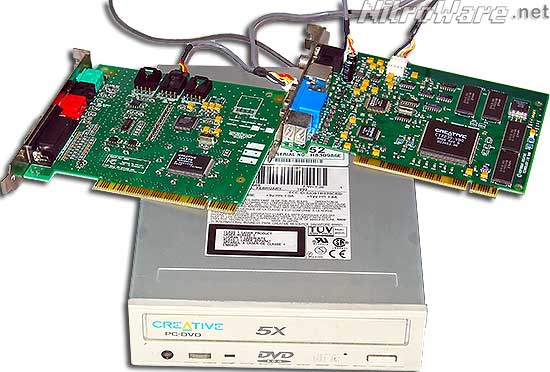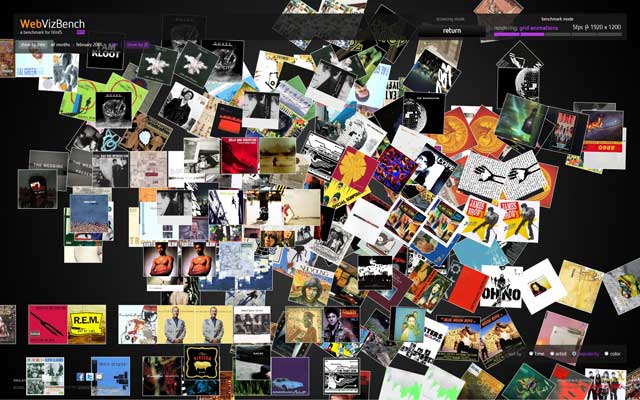Why is graphics important to the typical mainstream consumer?
In the past years, a typical computing user would have used many commercial or shareware applications to complete their tasks. Office productivity, desktop publishing (e.g. greeting cards or flyers), cooking programs, accounting, home automation, entertainment, multimedia and games.
All of these categories of programs were CPU intensive. Those who used such programs in the 90s will recall that playing back audio, video or even the drawing of a chart was at times a frustratingly slow process. Even the act of playing a simple game in the old DOS or early Windows operating systems was a complicated and frustrating process where the software required particular setup for the specific computer. Half of the time it was a challenge getting the particular software to start let alone to use.
If we navigate each generation of software and hardware things didn't really begin to change – to provide the end user with a simple, easy and relatively trouble free computing experience until Windows XP came around in 2001, which has a large user base ten years after its release unprecedented for any other modern software. Ironically at this time of Windows XP's release AMD's processors were named and optimised to the particular version of Microsoft Windows of the time, a trait common in this particular company's history which at times was on or ahead of the ball making CPUs that took full advantage of the software available.
Many people do not realise that a graphically rich computing experience is only a recent occurrence, relatively. Full colour displays became mainstream only by the mid-1990s. DVD quality video playback on an average computer was not possible until the early 2000s. HD quality video playback was not possible on an average computer until the late 2000s. These milestones were possible due to developments in hardware and software, but mainly the ability of hardware to accelerate or speedup computationally intensive tasks, such decryption or encryption, graphics and video using hardware optimised for parallel processing.
Average monitor size and resolution has shot up dramatically over the years in lock step with advances in graphics. The smallest consumer monitors in mass market for sale in 2011 are 18.5" with the largest being 30" diagonal and even larger sizes are available if we consider televisions and commercial displays. If we go back ten years, the largest consumer monitor available had a viewable screen size of 19" costing approximately A$2000 for a high end model. If we go back even further it was uncommon to find a monitor that was larger than 15" with 14" being the norm in the DOS and early Windows eras..
The resolution of some current pocket sized smart devices is as high as the typical resolution used for PC graphics 15 years ago, something which many industry commentators neglect in their obsessive quest for the perfect smart device.
A graphical operating system is not even the half of it. Displaying full colour photos or video on a computer was an extremely difficult task for many years until the late 1990s and required expensive hardware, software and much patience. Early CPUs required an optional co-processor to handle floating point math - the math that drives the pictures and videos you see daily and take for granted. Patience was such a virtue that many individuals and organisations used Apple or Amiga computers for any imaging or multimedia work through the 80s and early 90s. The Internet was basic text based during this period too.
Reading this you might think:
"Yeah so what, I don't need graphics or a fast PC since I don't play games or watch DVD/Blu-Ray Discs' on my computer. I have a large HDTV and DVD/Blu-Ray player and a game console. I only use my computer to surf the web, Facebook and check mails"
This not only is an incorrect way to think but also is technically flawed.
The technologies used in any modern digital medium wether its MP3, DVD, Blu-Ray, HDTV and modern games are cross platform and in many cases content for these formats is created on a computer.
The devices that play these digital media contain embedded computers running some software, the same software present on the PC. The device digital media is consumed on might vary significantly, anything from a portable player to a phone to a portable computer to a desktop to a TV to a car, but the format of the media is the same regardless of the device.
Now that we have the hardware and software platforms that are capable of handling any task thrown at them without slowing to a crawl, what we can do with these platforms changes dramatically.
The Internet has changed how people use their computers and smart devices and user base has gone from primarily content creation to consumption. Websites are increasingly visual and feature rich, YouTube and other video sharing videos are 'killer apps' for many hardware and software vendors. To run all this needs good graphics support to render all the visually rich sites and good video support to properly play back video.
All modern operating systems (Windows 7, Vista, Linux, Mac OS and phone/tablet operating systems) have frameworks and systems to accelerate different tasks on graphics hardware.
All modern Web browsers such as Internet Explorer 9, Firefox, Chrome, Opera and Safari and their mobile cousins use these systems to accelerate the display of websites and playback of Internet video.
Most modern content creation applications such as Microsoft Office 2010, Live Essentials 2011, Adobe Creative Suite 5, MotionDSP vReveal, Cyberlink Powerdirector and Mathworks Matlab leverage the graphics hardware capabilities in a system to get the absolute maximum performance possible and then some. In the case of video conversion or professional content creation, the speedups are many times faster.
It's not just about consumer use, the top supercomputers in the world on the TOP500 list all use very high end graphics hardware handle computationally intensive tasks, something which graphics cards/GPUs are designed for and are good for.
All mainstream hardware and software vendors now offer products and platforms that offer a good internet experience. These products vary slightly and vary to suit their intended target market.
In the past, from the late 90s to the late mid 2000s the graphics system in a typical consumer computer was used to draw the display very quickly and display 3D for games, entertainment or professional use. Based on the then possible uses of a powerful graphics card, some vendors and users felt there was no need for an expensive graphics card and passed over this part.
Given the change in computing paradigms over the years such as digital photography, HD home movies and Internet video sharing sites , modern graphics is a requirement of modern operating systems. This pre-requisite required every PC shipping to have graphics with good 2D and video support and basic 3D support. Integrated graphics filled this need.
